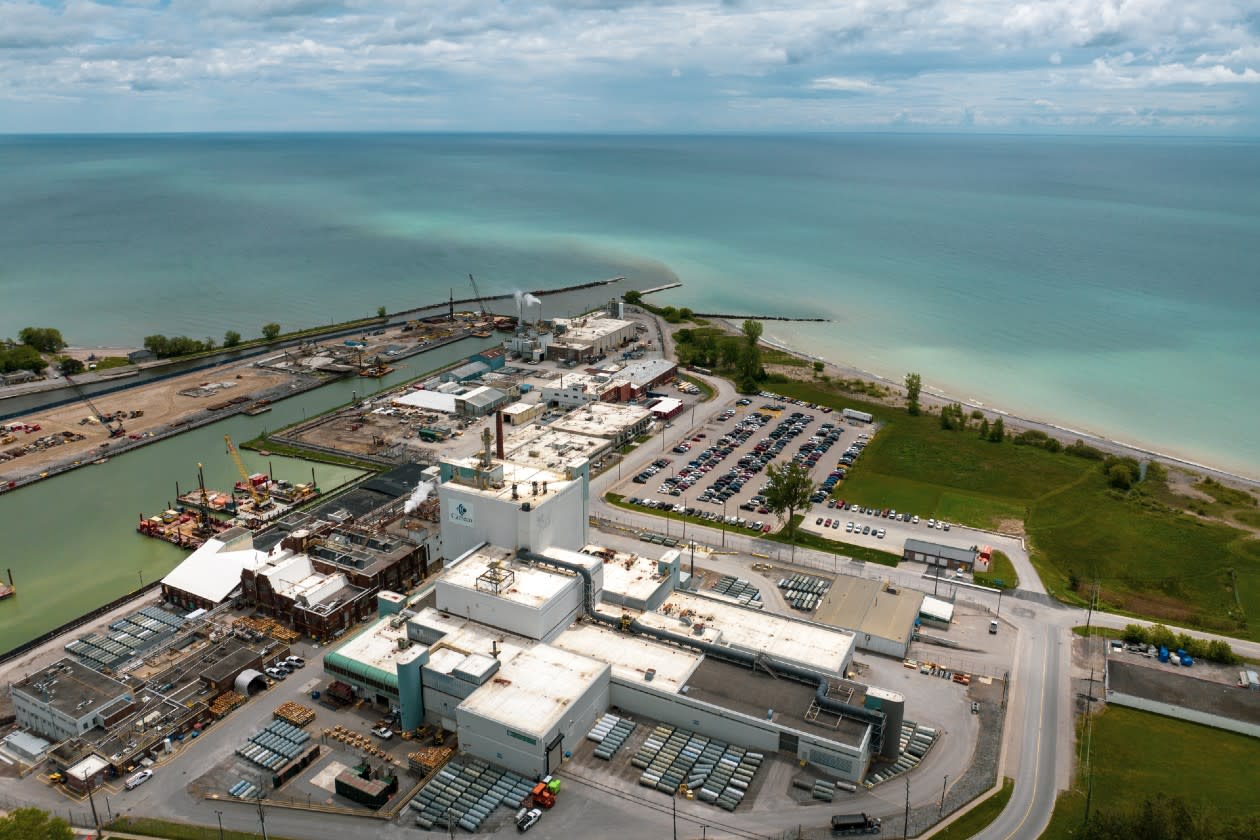Cameco reported third-quarter revenue of $721mn, up 25%. Underlying cash profit (EBITDA) rose 32% to $308mn. Performance was driven by the largest business unit, Uranium, which benefited from the highest long-term contract pricing since 2012. Profits were given a boost by the recent acquisition of a 49% stake in Westinghouse (a nuclear plant technologies, products and services business).
Uranium production rose 43% and sales volumes rose 4%, in line with typical delivery patterns. The average realised price on Uranium sales was up 17%.
Net debt improved from $1.2bn to $1.1bn since the beginning of the year. The board has declared a dividend of $0.16 and a further plan to increase the dividend over the coming years has been proposed.
2024 guidance has been raised, looking for revenue of $3.0-$3.2bn (previously $2.85-3.00bn).
*Currency = Canadian Dollars
The shares rose 1.1% in pre-market trading.
Our view
Cameco is a company at the epicentre of the clean energy transition. This Canada-based giant is engaged in providing uranium fuel to generate clean, reliable baseload (the minimum amount of electric power needed to be supplied to the electrical grid at any given time) electricity around the globe. The company also offers nuclear fuel processing services, refinery services and it manufactures fuel assemblies and reactor components.
Third-quarter commentary continued to highlight improving trends. We would urge investors not to follow quarterly numbers like a hawk, the industry is inherently lumpy, so longer term trends are what we pay attention to. Contracts tend to be long term in their nature too, so it can take some time for higher prices to fully reflect in results.
Revenue jumped 39% last year, partly because of rising uranium prices and volumes. We don’t expect the same jump this year, but the midpoint of current guidance would be a 19% rise, and there are still longer-term price and volume tailwinds playing out.
Attitudes towards nuclear energy show signs of shifting in Cameco’s favour. Policymakers are more proactively proposing nuclear as an important part of energy plans. In some cases, full-scale anti-nuclear stances are being reversed. We think the market is primed to grow from here. Not only because of the helpful megatrend of cleaner energy solutions, but because there is limited uranium supply coming online at a time when demand is increasing.
There are many reasons for this heightened demand. Geopolitical tensions and a desire to secure energy supply is one, but perhaps the bigger pushes are coming from the energy transition and the huge energy requirements needed to power the AI revolution.
Cameco is primed to benefit. It has several approved and built assets in less volatile regions ready to fire up. Almost 90% of uranium consumption is in countries with little-to-no primary production and Cameco has controlling ownership of one of the world’s largest high-grade uranium reserves.
Cameco is exposed to political risk. We think policymakers will remain on a more nuclear-friendly course, but this isn’t guaranteed and could change, which would affect Cameco. Any nuclear disaster events would badly hurt the valuation, too. Also, uranium is a commodity, and that makes Cameco exposed to a cycle it has little control over.
Ultimately, rising concern about energy supply and a re-evaluation of nuclear energy's role means we’re at an inflection point for uranium demand. Cameco is a well-placed name to capitalise on this, and high barriers to entry keep competitors at bay. Although share prices can fall as well as rise.
Environmental, social and governance risk
Mining companies have high ESG risk. Emissions, effluents & waste and community relations are key risk drivers in this sector. Operational carbon emissions, resource use, health and safety, labour relations, and bribery and corruption are also contributors to ESG risk.
Cameco’s overall management of material ESG issues is strong.
There is board level responsibility for overseeing ESG issues, however, ESG reporting is not in accordance with leading reporting standards. Executive remuneration is explicitly linked to sustainability performance targets. Scope 1 and 2 emissions are disclosed and carbon intensity tracks below the industry average. There are also programmes in place to reduce own emissions, with targets and audits. Cameco has not been involved is any major community relations controversies.
Cameco key facts
All ratios are sourced from Refinitiv, based on previous day’s closing values. Please remember yields are variable and not a reliable indicator of future income. Keep in mind key figures shouldn’t be looked at on their own – it’s important to understand the big picture.
This article is not advice or a recommendation to buy, sell or hold any investment.No view is given on the present or future value or price of any investment, and investors should form their own view on any proposed investment.This article has not been prepared in accordance with legal requirements designed to promote the independence of investment research and is considered a marketing communication.Non - independent research is not subject to FCA rules prohibiting dealing ahead of research, however HL has put controls in place(including dealing restrictions, physical and information barriers) to manage potential conflicts of interest presented by such dealing.Please see our full non - independent research disclosure for more information.


